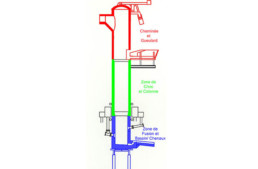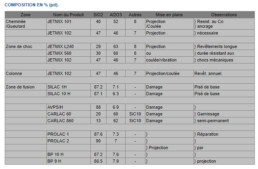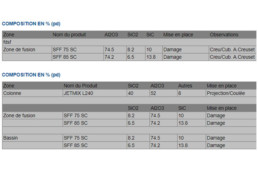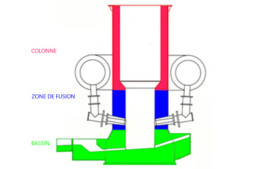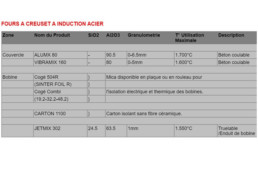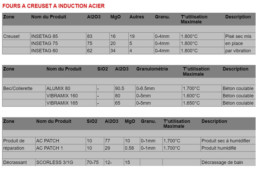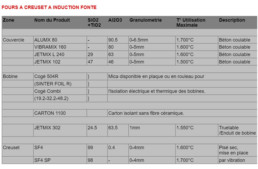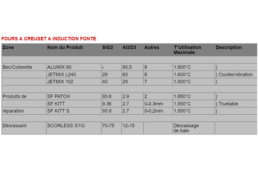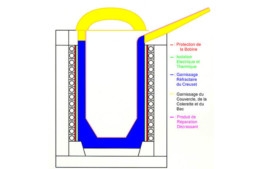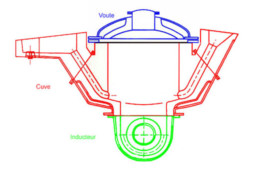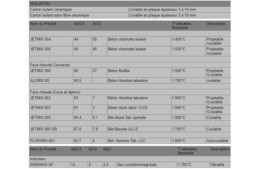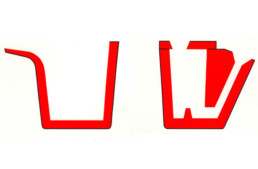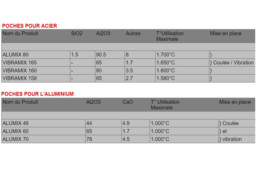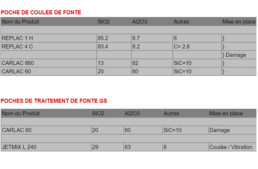Born of the manufacture of refractories for cupola furnaces, we monitor and predict technological advances to offer our customers the best products adapted to sensitive uses.
Effective and high-performance manufacturing facilities enable the company to manufacture and distribute, through trade agreements, more than 20,000 tonnes of refractory products per year to the biggest companies.
Through the experience we have acquired, we have become specialists in melting and maintaining molten cast iron, steel and aluminium.
Refractories for Cold blast cupola furnaces
In all cupolas with a diameter of at least 700 mm, pneumatic gunning has replaced manual tamping.
Since 1965,![]() designs and builds the AUTOJETS used in many foundries.
designs and builds the AUTOJETS used in many foundries.
They are defined by their robustness and reliability.
AUTOJET III EBA Capacity: 300 litres Automatic Flow rate: 4 to 5 Tonnes/hour.
AUTOJET III EBS Capacity: 150 litres Manual Flow rate: 2 Tonnes/hour.
Refractories for long-campaign Cupola furnaces
For this type of cupola, pouring or deslagging siphon repairs can be performed with silicon carbide-reinforced concrete.
![]() also has products used to create preformed and pre-sintered inserts for the connection between the basin and forehearth..
also has products used to create preformed and pre-sintered inserts for the connection between the basin and forehearth..
Do not hesitate to contact us.
Coreless induction furnaces
We are able to propose all types of application equipment, vibrating crosses, vibrating flat rammers, pneumatic vibrators and electric arm vibrators.
In order to eliminate the need to handle siliceous products, ![]() has developed an automated machine, the SILMATIC.
has developed an automated machine, the SILMATIC.
Do not hesitate to contact us.
Channel induction furnaces
We handle all operations, including drying, sintering and filling the furnaces with metal.
Hot air generators and oxygen-gas burners are used, along with couplings and
recorders, to monitor temperature increases during the study.
This heat treatment is key to ensuring the service life of the refractory material.
![]() prepares the joint, fits the induction unit and trains local staff for future
prepares the joint, fits the induction unit and trains local staff for future
operations.
SUPERVISION
By entering the regularly communicated electrical and temperature measurements and by interpreting the periodic thermographic observations,![]() provides the means of determining otherwise invisible factors of furnace change, thus allowing furnace use planning.
provides the means of determining otherwise invisible factors of furnace change, thus allowing furnace use planning.
MAINTENANCE
Using computer-assisted monitoring, the![]() specialists predict potential induction unit changes.
specialists predict potential induction unit changes.
Check the tables for a non-exhaustive list of our products. Contact us.
Ladles
Safety and efficiency, our experience and know-how allow us to recommend the best linings for optimum thermal efficiency.
Minimising thermal leakage and increasing lining service life, two underlying concerns
that guide our recommendations.



